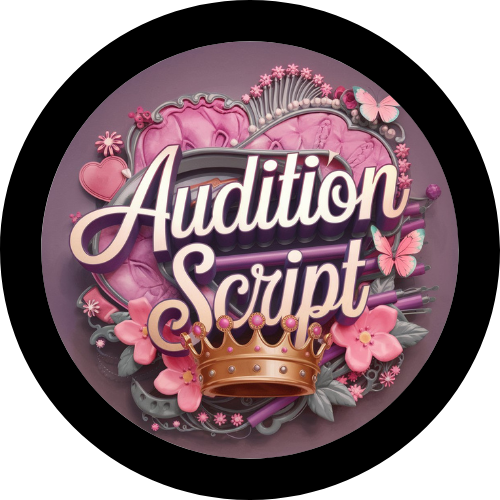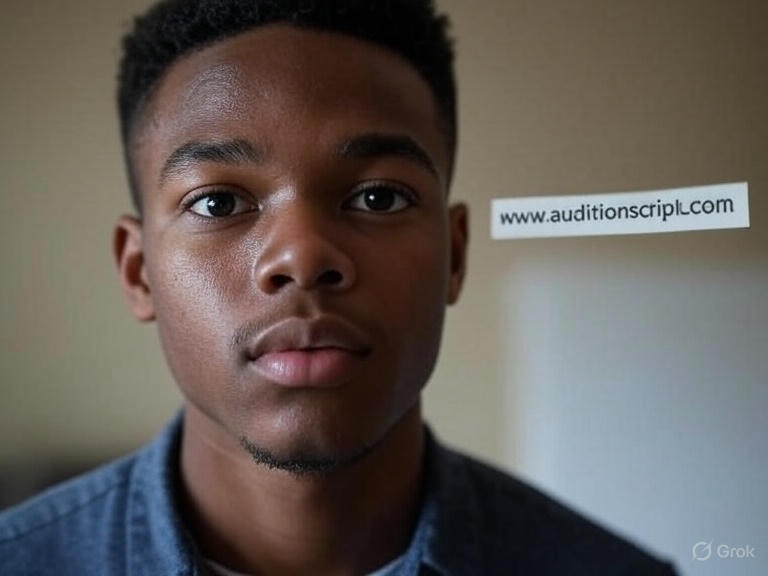Your Secret Weapon: How to Find and Nail Your Self-Tape Audition Script
Ever feel that mix of excitement and sheer panic when you see those magical words in a casting call? Submit a self-tape.
Your heart races. This is it! Your big chance! And then the immediate follow-up thought: But what on earth should I perform?
You’re not alone. In today’s acting world, the self-tape isn’t just an option it’s the front door to almost every opportunity. And the key to unlocking that door? The right self-tape audition script.
Choosing and performing the perfect piece can feel overwhelming. But what if I told you that with a few insider tips and the right material, you could turn that panic into confidence? Let’s break it down together.
Why the Right Self-Tape Script is a Game-Changer
Gone are the days of only rushing to a casting office. Now, your living room is your audition room. This is actually a huge advantage! You have control over your environment, your timing, and most importantly, the material you choose.
The right script does two critical things:
1. Showcases Your Specific Strengths: It highlights your unique type, range, and emotional authenticity.
2. Proves You Can Handle the Role: It shows casting directors you understand character, subtext, and storytelling.
A generic, overused monologue gets lost in the shuffle. A tailored, well-performed scene makes them sit up and hit “play” on your next tape immediately.
How to Choose a Winning Self-Tape Audition Script
Forget scrolling endlessly through confusing forums. Follow this simple checklist:
Know Your Type: Be ruthlessly honest. Are you the comedic best friend? The intense lead? The quirky character actor? Choose a script that fits your natural casting. This isn’t about limitation; it’s about strategic marketing.
Seek Conflict & Objective: Great scenes are built on desire. What does the character want? What’s standing in their way? This “scene objective” gives you something to play and makes your performance dynamic, not just a series of recited lines.
Keep it Short & Powerful: Your tape should be 60-90 seconds max. Casting directors are reviewing hundreds of these. Grab their attention quickly, leave a strong impression, and get out.
Make it Active: Avoid scripts that are just a character telling a story. Look for material where something is happening in the moment. Are they convincing someone? Confessing a secret? Begging for help? This creates immediacy.
Your Tech Setup: Keep It Simple, seriously!
Don’t let technical worries stop you. You don’t need a Hollywood studio.
Camera: Your smartphone is perfect. Just use a tripod or stack of books to keep it steady.
Sound: Film in a quiet, carpeted room to avoid echo. Speak clearly toward the camera.
Lighting: Your best friend is a window! Face natural light for a flattering, clear image. No window? A simple ring light works wonders.
Background: A plain, neutral wall (grey, blue, or beige) is ideal. It keeps the focus on you.

Practice Makes Permanent: Let’s Get to Work
Theory is great, but action is better. Here are two original, copyright-free practice scripts you can use right now to sharpen your skills.
Practice Script 1: “The Ultimatum” (Drama – 60 seconds)
**Character: ** Alex, who has discovered their partner has been keeping a major secret.
**Context: ** This is the moment of confrontation. The truth is out, and Alex needs a real answer.
(Alex speaks calmly, but the hurt is simmering just under the surface)
**Alex: ** “I saw the message, Sam. I wasn’t snooping. Your phone was on the table, and it lit up. So don’t… don’t try to turn this on me. Just tell me the truth. For once. Who is he? … How long has it been going on? The silence is worse than the lie. Just say it.”
**(Their calm breaks, voice cracking with emotion) **
**Alex: ** “Do you even love me? Or am I just… convenient? I need you to look at me and tell me what you want. Because I can’t do this anymore.”
**Practice Script #2: “The Backup Plan” (Comedy – 75 seconds) **
**Character: ** Jamie, trying to convince their overly cautious friend to do something wildly impulsive.
**Context: ** They are in a coffee shop, scheming.
**Jamie: ** “Okay, hear me out. Worst-case scenario: we get caught. What happens? A security guard, probably named Carl, yells at us. We get a trespassing warning. We leave. That’s it. That is the literal worst thing that can happen.”
**(Leaning in, full of excitement) **
**Jamie: ** “Best-case scenario? We become legends. We get the story. We get the photo. We’ll be eighty years old and still talking about the night we climbed the water tower to see the meteor shower. Stop calculating the risk and start calculating the awesome. Live a little, man. What’s the point of a backup plan if you never have any fun to begin with?”
Pro Tip: The Slate is Your First Impression
Before you launch into your script, you’ll need to “slate.” This is simply a clear, friendly introduction to the camera. Keep it simple:
* Smile.
* State your name clearly.
* Say the name of the character you’ll be playing.
* Example: *”Hi, my name is Jane Doe, and I’ll be reading for the role of Alex.”*
That’s it! Then, take a brief pause, reset your expression, and begin your scene.
Your Next Steps
Your journey is just beginning. Now that you have the tools:
1. **Practice: ** Use the scripts above. Record yourself. Watch it back. Be your own best critic.
2. **Explore: ** Find more material that speaks to you. Look for new plays, write your own scenes, or trade scripts with actor friends.
3. **Submit: ** Get your materials ready—a great headshot, a clean resume—and start submitting to casting platforms like **Backstage** and **Casting Networks**.
The perfect role is out there waiting for your perfect audition. Now you know how to find the script to help you land it.
**Break a leg! **
#Self-tape audition script, #how to self-tape, #audition scripts, #actor self-tape, #self-tape tips, #self-tape examples, #casting audition, #video audition, #acting practice scripts, #how to find monologues.

